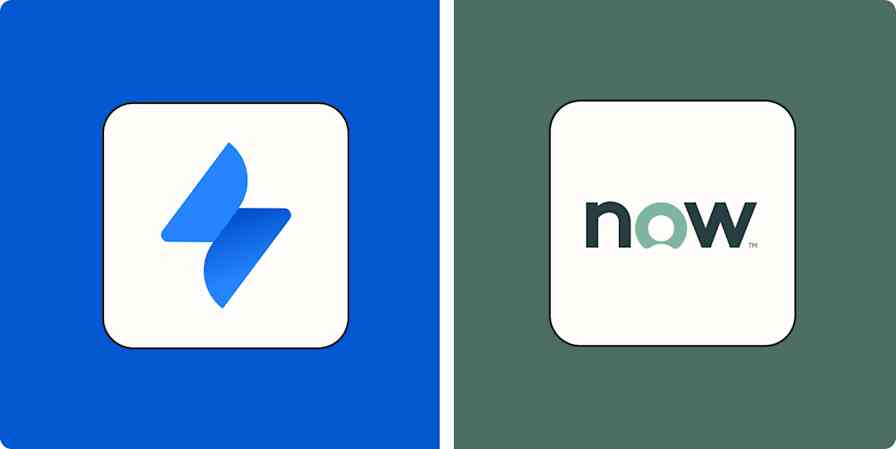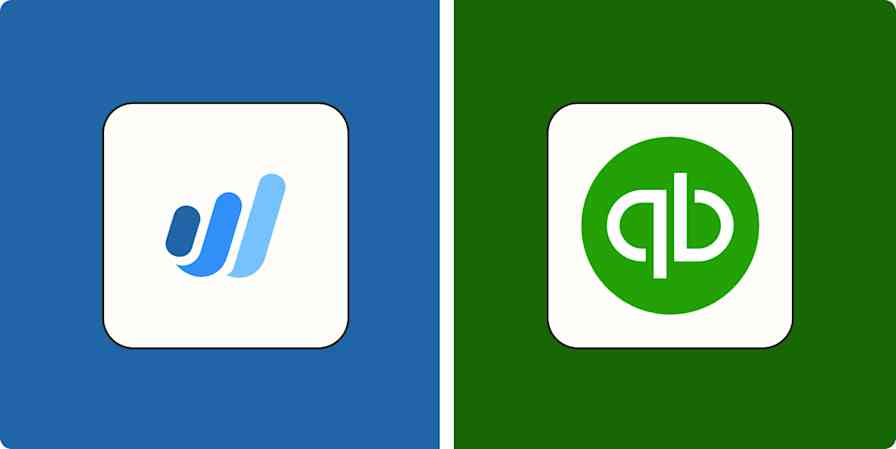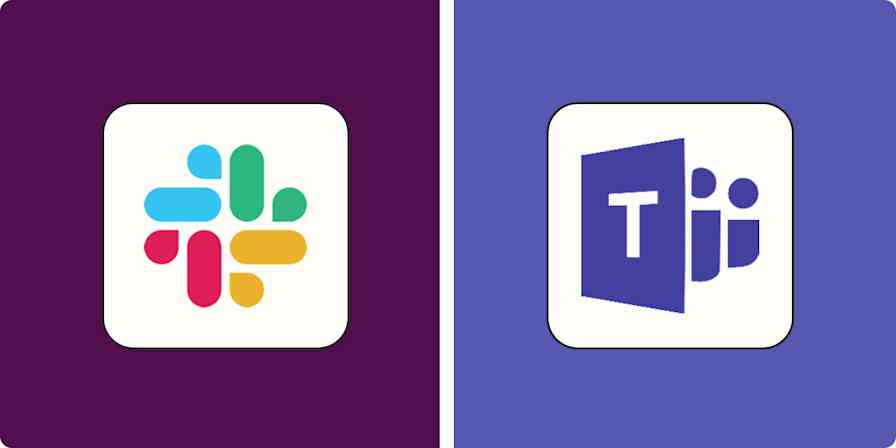Given that Mailchimp has been around since 2001, it's no surprise that it's one of the most popular email marketing platforms out there. But several powerhouse marketing tools have landed on the scene in the decades since Mailchimp's debut. And Klaviyo, a popular marketing platform in the eCommerce world, is a strong contender as an alternative to Mailchimp.
As a freelance writer, I'm one of Mailchimp's target users—and I've been using Mailchimp exclusively for years now. But I've been curious about other options, which is why I was excited to learn more about Klaviyo when I first tried it out last year.
This year, I spent a lot of time exploring each app, comparing their strengths and weaknesses, and here, I'll lay out the main differences between Klaviyo and Mailchimp—so you can choose the best tool for you.
Klaviyo vs. Mailchimp at a glance
If you're looking for the short version, this table lists the main differences between Mailchimp and Klaviyo. But keep reading for details about my experience using each platform—or scroll to the end for my detailed recommendations of who each tool is the best fit for.
| Klaviyo | Mailchimp |
|---|---|---|
Ease of use | ⭐️⭐️⭐️⭐️ Lots of features might be overwhelming, but overall still very intuitive | ⭐️⭐️⭐️⭐️⭐️ Very simple and comes with lots of guidance |
Pricing | ⭐️⭐️⭐️ More robust free plan, but paid plans can get pricey fast | ⭐️⭐️⭐️⭐️ Free plan for basic users, with mid-tier pricing options available for growing brands |
Digital marketing channels | ⭐️⭐️⭐️ Focuses on email and SMS | ⭐️⭐️⭐️⭐️ Email, landing pages, ads, postcards, social posts, and surveys; SMS credits are also now offered as an add-on service |
Features | ⭐️⭐️⭐️⭐️⭐️ In-depth tools for customization, segmentation, automations, analytics/reports | ⭐️⭐️⭐️ Mostly the same features as Klaviyo, but much less in-depth and less customizable |
Ideal user | Larger eCommerce brands who need a powerful marketing tool to integrate into their existing store and CRM | Small brands and beginners who don't necessarily sell products but want an affordable, all-in-one marketing tool to help reach diverse channels |
Mailchimp is easier to use, while Klaviyo offers more in-depth features and guidance
In my eyes, one of the biggest differences between these two apps is their intended audience. Mailchimp prioritizes simplicity and ease of use, while Klaviyo is for (primarily eCommerce) brands who are serious about ramping up their marketing game.
Both Mailchimp and Klaviyo offer similar user interfaces, with a left-hand menu displaying tabs for campaigns, audience, content creation, and analytics. But Mailchimp keeps everything simpler, with less customization overload and more broad-strokes analytics. Put simply, Mailchimp has all the basics without overloading you with options and data.
But if you're looking for more granular customization options and in-depth features (and you're not afraid of a steeper learning curve), Klaviyo might make more sense. When it comes to segmentation, automations, and analytics, Klaviyo goes a few steps beyond Mailchimp.
For example, take a look at each app's approach to segmentation. Mailchimp's audience dashboard lets you create segments and tags to target contacts by location, engagement, and activity. It also recently added a segment builder, where Standard plan users and above can choose from pre-set segments or create their own filter based on things like signup source, activity, and personal information. But compared to Klaviyo, the auto-filter options are limited.
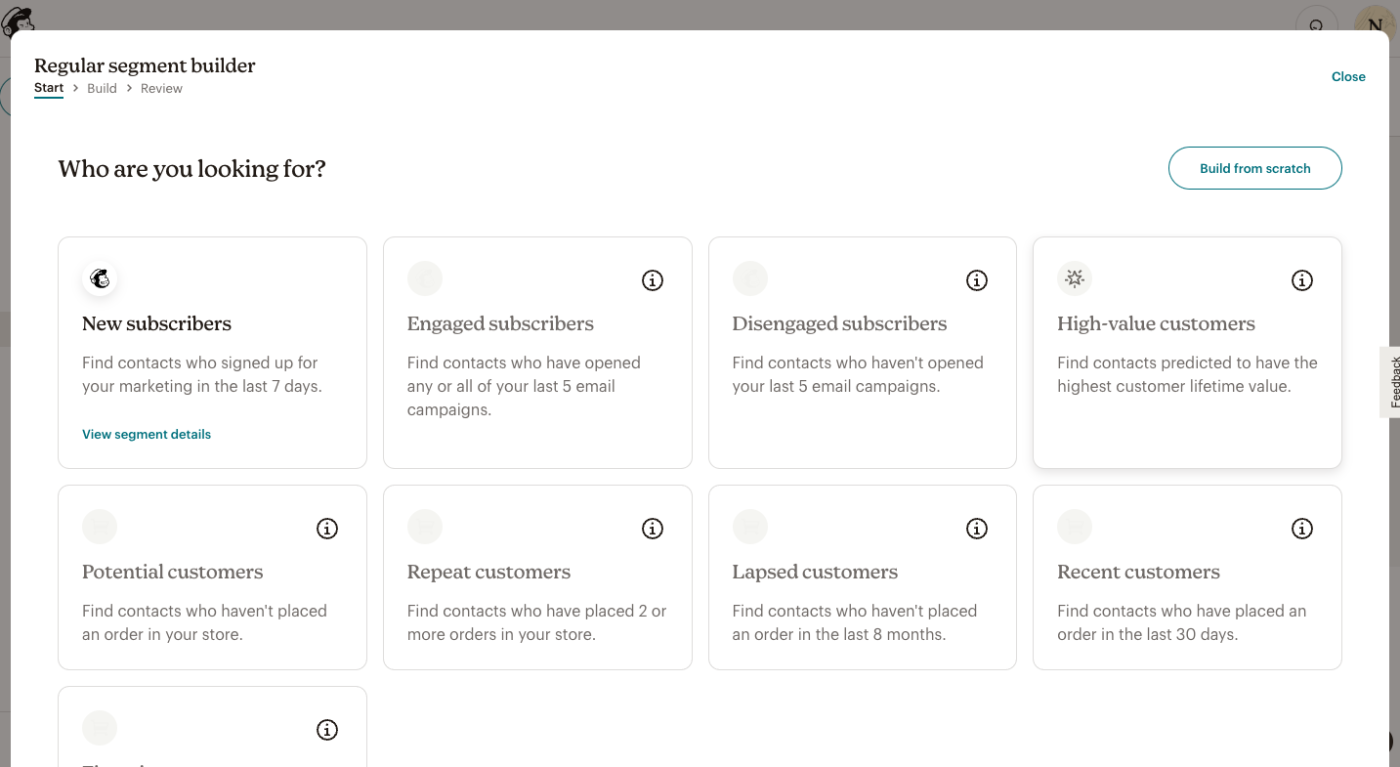
Klaviyo, on the other hand, comes pre-set with several segments and filters that automatically sort new subscribers into helpful buckets like SMS subscribers, new subscribers, and different ages of engagement. And if you want to create your own custom segment, it's easier to create them based on your exact specifications in Klaviyo.
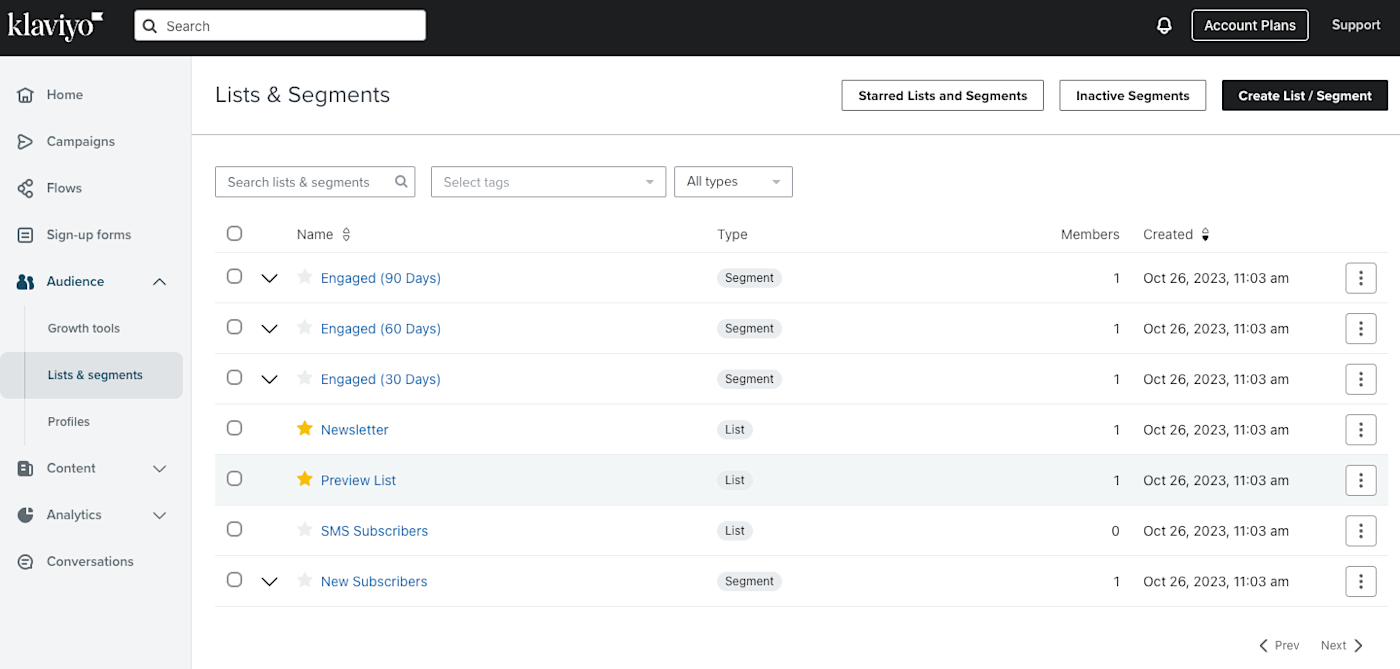
Klaviyo also offers much more guidance to new users, including personalized recommendations based on your goals. You'll get tips on how to grow your audience, build customer relationships, and earn revenue.
Klaviyo has more comprehensive automation options across the board, especially when it comes to pre-built flows and templates. Mailchimp also lets you create automated journeys with conditional splits, triggers, time delays, and so on—but Klaviyo doesn't make you build as much from scratch. And the customization options are much more granular with Klaviyo.
Mailchimp offers more digital marketing channels
If you're looking for a marketing tool that lets you reach your audience on several digital channels at once, Mailchimp is your app. It lets you create and manage emails, SMS messages, landing pages, ads, postcards, social posts, and surveys—all from within the platform.
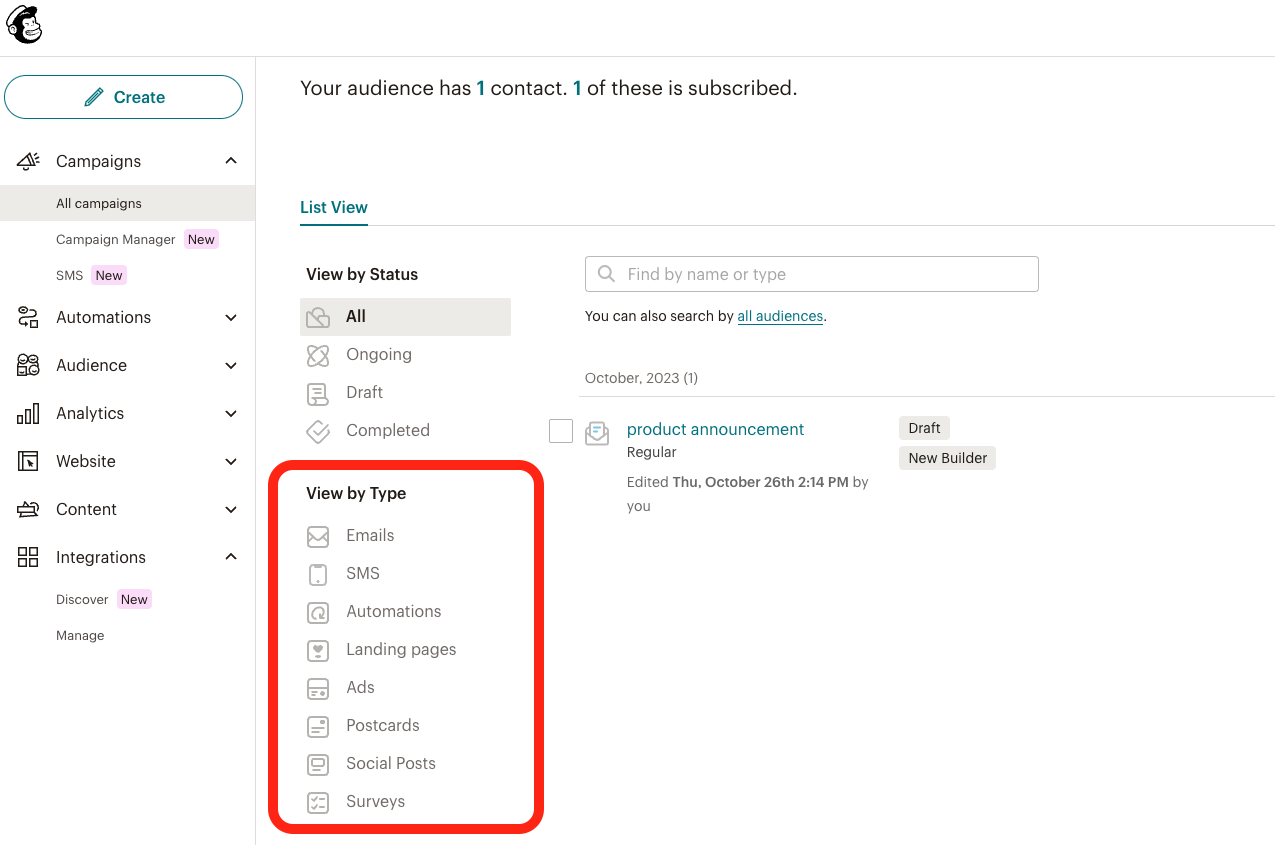
Until recently, the one content channel Mailchimp didn't have (that Klaviyo did) was an SMS messaging feature. But this year, Mailchimp introduced SMS an add-on feature option for all paid subscriptions. Users can apply to add SMS marketing to their plans, with credits starting at $20 for 1,000 messages. This new feature makes Mailchimp a more attractive option for brands that might go with Klaviyo mainly for the SMS tools. But at this point, SMS with Mailchimp is still new and not as deeply integrated into the platform's main feature set as it is with Klaviyo.
Where Mailchimp really shines compared to Klaviyo is its other digital marketing channels. If you want to focus on online channels like email, landing pages, and social media, Mailchimp lets you create a multi-channel marketing approach from one content creation hub. If you input your website URL, Mailchimp's Creative Assistant will even pull in your logo and brand colors from your website. This feature lets you hit the ground running with consistent designs across your emails and social posts.
Suppose you're a small business owner (like me) who has to wear multiple hats, including graphic designer and email marketer. In that case, Mailchimp also offers a native Canva integration that can make your life much easier. Connecting Mailchimp to Canva keeps your brand logo, fonts, and color uniform across all of your digital products, and you can easily create designs in Canva and publish them directly to Mailchimp's Content Studio.
Mailchimp even manages to make website building one of its core features. New businesses can use Mailchimp as an all-in-one studio for building a website, selling products, and booking appointments from one place. Keep in mind, though, that the web pages won't be as customizable as if you use a dedicated CMS like WordPress. And your website's domain will be hosted through Mailchimp (for example, the URL assigned to my test business was acme-co-b220.mailchimpsites.com). But if you operate mainly through referral traffic from social media, a basic, Mailchimp-hosted website could work for smaller businesses. Or you could add a Core Commerce subscription for an additional $10 per month to use a custom domain.
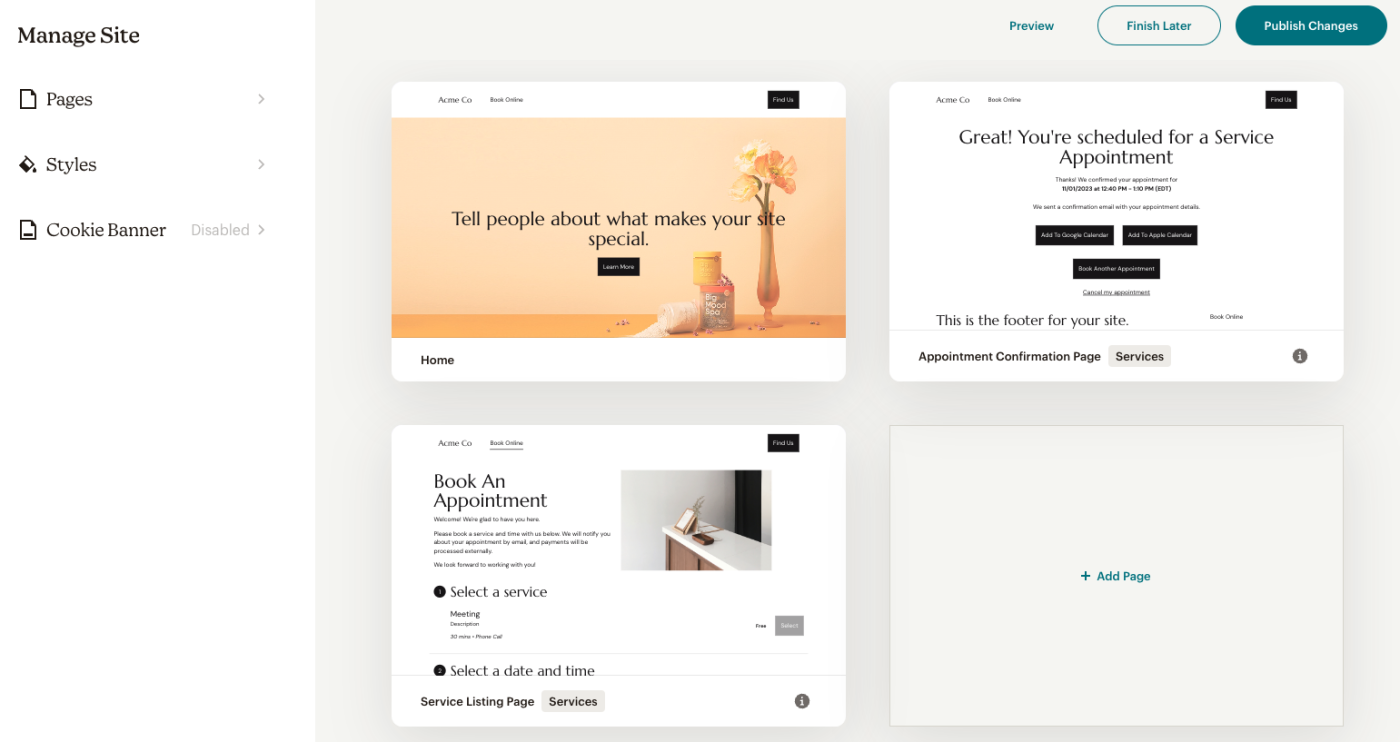
Klaviyo offers more for eCommerce brands
While Mailchimp is more suited to small businesses and solo content creators, Klaviyo is ideal for eCommerce brands. From the moment you start setting up your account, the platform is focused on eCommerce; you're asked to link it to one of fifteen available eCommerce platforms (including Shopify, WooCommerce, Wix, and Magento).
Klaviyo also provides automated alerts for your online shoppers, like cart reminders, order updates, and price drop alerts.
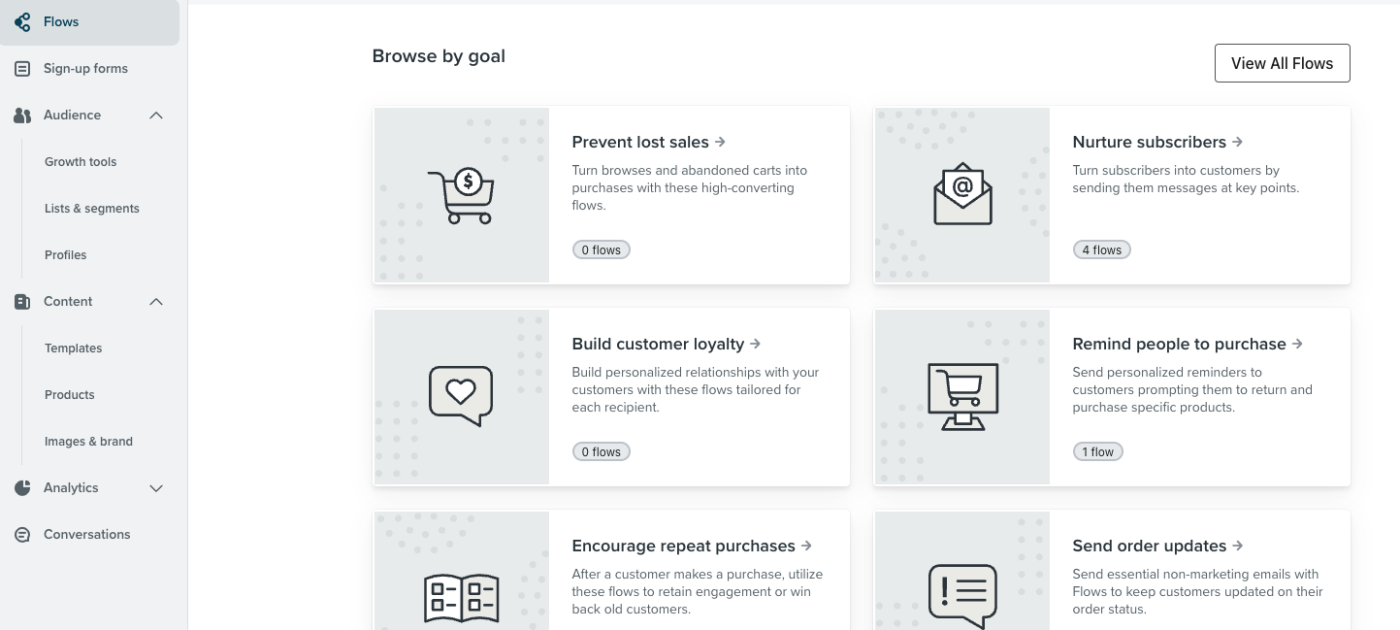
Mailchimp offers similar automations like abandoned cart reminders and order notifications, but you get more variety and customization with Klaviyo's eCommerce automation options. And while Mailchimp hides most conditional flows behind a paywall, these automations are available on Klaviyo's free plan.
With Klaviyo, you can even set industry-specific benchmarks to help you compare your brand's performance with other organizations in your niche. The more email and SMS campaigns you send, the more insights and comparisons to your assigned "peer group" are available in Klaviyo's analytics dashboard.
Klaviyo has a more robust free plan, while Mailchimp's paid plans are more affordable
When it comes to pricing, an argument could be made for both tools.
If you're looking to get the most out of a free plan, you'll probably want to go with Klaviyo. Klaviyo's free plan is more robust than Mailchimp's, with the flows, automations, and even scheduled email campaigns that Mailchimp restricts to its paid plans. For example, Klaviyo and Mailchimp offer pre-built marketing automations (called "journeys" in Mailchimp and "flows" in Klaviyo). But while Mailchimp doesn't offer journeys on the free tier—and only allows up to four unique journeys in the Essentials plan—Klaviyo offers its flows for free.
The only way Mailchimp's free plan beats Klaviyo's is in the number of subscribers it allows. While Klaviyo's free plan is limited to 250 contacts, Mailchimp's free subscription allows up to 500.
On the other hand, Mailchimp is best if you're looking for more affordable paid tiers. If you want to graduate from the free Klaviyo plan with 1,000 or more contacts, you'll have to shell out $45/month. With Mailchimp, you can scale up much more slowly. Mailchimp's Essentials plan (at $13/month) is a great choice for small businesses who have outgrown the free plan but still aren't ready to pay big bucks for more analytics and eCommerce automations than they need.
Mailchimp and Klaviyo both connect to Zapier
Any tool is more powerful when you can connect it with the rest of your tech stack. Both Mailchimp and Klaviyo offer a number of native integrations with eCommerce apps, CRM tools, and more—and because they both integrate with Zapier, you have the option to connect them with thousands of other tools as well. Check out these articles for some of the most popular automation ideas:
Or get started with one of these pre-made workflows:
Add subscribers to Mailchimp for new Google Sheets rows
Subscribe new Facebook Lead Ad leads to a Mailchimp list
Add Klaviyo subscribers for new submissions in Jotform
Zapier is a no-code automation tool that lets you connect your apps into automated workflows, so that every person and every business can move forward at growth speed. Learn more about how it works.
Mailchimp vs. Klaviyo: Which one is best for you?
Mailchimp is an excellent choice for small brands and beginners who want an affordable, all-in-one marketing tool. Especially if you're on a budget, you can get a long way by relying on Mailchimp as your website builder, CRM, and digital marketing software. So if your primary goal is to create a diverse digital marketing strategy, and you care about having more subscribers and emails compared to granular analytics and customization, Mailchimp is probably the right choice for you.
On the other hand, Klaviyo is better for larger eCommerce brands that need a powerful marketing tool to integrate into their existing online store and CRM. Klaviyo's features are geared toward fast-growing retail businesses looking for in-depth analytics, multivariate testing, and out-of-the-box automations. If your main goal is to sell products online and see a fast ROI on your marketing efforts, Klaviyo is the better choice.
Thinking about other Mailchimp alternatives? Here are our comparisons of Constant Contact vs. Mailchimp, HubSpot vs. Mailchimp, ConvertKit vs. Mailchimp, Sendinblue vs. Mailchimp, SendGrid vs. Mailchimp, Flodesk vs. Mailchimp, MailerLite vs. Mailchimp, and ActiveCampaign vs. Mailchimp.

